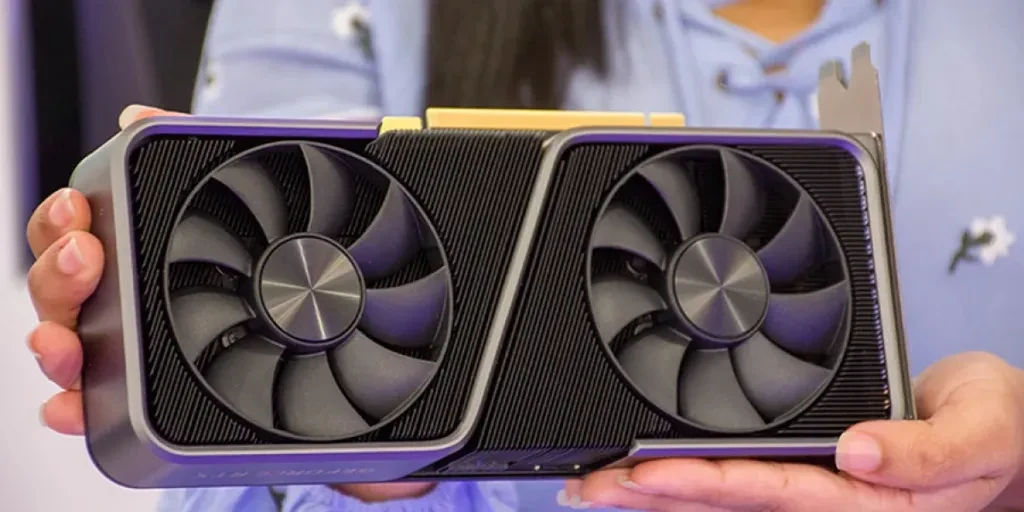Food dehydrators are a fantastic tool for any kitchen, especially for those who value the freshness of home-preserved foods. These devices extend the life of fruits, vegetables, meats, and more while keeping their nutritional qualities intact. The best part is that consumers can create their fruit leather and dried fruits in large quantities straight from garden-fresh berries, peaches, beef jerky, or apples with a dehydrator.
They can also preserve surplus tomatoes, carrots, and herbs for colder months when fresh produce isn’t readily available. Aside from health benefits, dehydrating food at home can be a great way to cut costs compared to buying pre-packaged dried goods. However, before entering the market, retailers must understand the various models available to find the one that best fits their consumers’ needs.
This guide covers everything retailers need to know when stocking food dehydrators in 2025.
Table of Contents
A summary of the food dehydrator market
Things to consider when stocking food dehydrators
1. Vertical vs. horizontal airflow dehydrators
2. Temperature range
3. Tray shape
4. Construction materials
5. Fan power and wattage
6. Additional features for enhanced functionality
Final words
A summary of the food dehydrator market
According to Google data, food dehydrators are quite popular, attracting an impressive 201,000 thousand searches monthly. They’re a popular way to preserve food, so it’s no surprise the market is also booming. Grand View Research says the market’s value in 2024 is US$ 2.080 billion, and they expect it to hit US$ 2.838 billion by 2030 at a 5.4% compound annual growth rate (CAGR).
Although the industrial segment is leading the food dehydrator market with a 43.3% share, the residential sector is growing fast as more people prefer natural, preservative-free options. North America is also the largest regional market for food dehydrators, accounting for a 37.2% share in 2024.
Things to consider when stocking food dehydrators
1. Vertical vs. horizontal airflow dehydrators
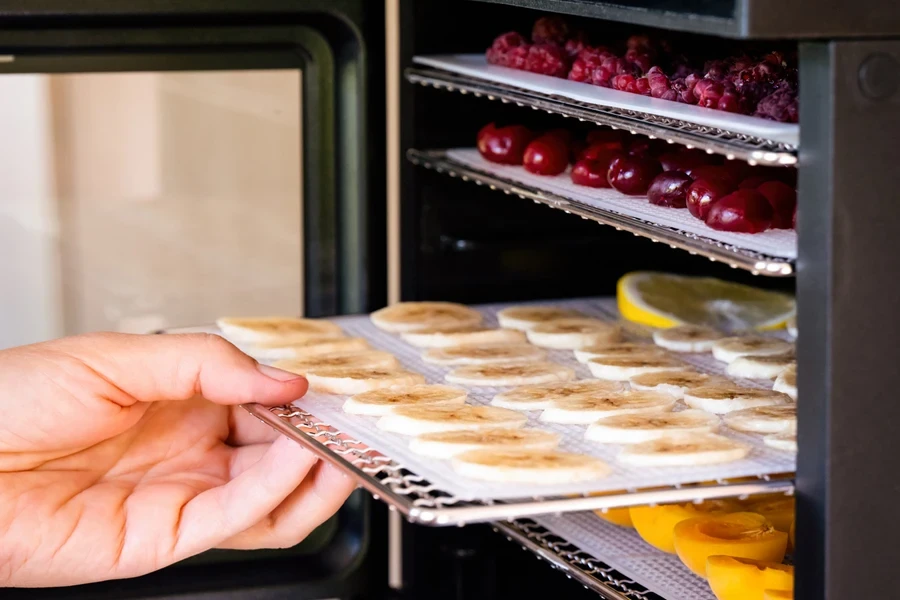
When selecting a dehydrator, it is essential to decide between vertical and horizontal airflow designs. Each style offers unique benefits and a few limitations. Here’s a closer look at each option:
Vertical airflow dehydrators
Manufacturers design vertical airflow models with stackable trays and a fan-and-heating unit at the bottom or top lid. However, lower-cost versions can sometimes result in uneven drying, as trays closer to the heat source tend to dry faster than those farther away. So, users may need to rotate the trays frequently to prevent this issue, which can be cumbersome.
Conversely, higher-end brands like L’Equip and Nesco/American Harvest address this issue with a hybrid system that channels warm air directly to each tray. This design allows even drying while minimizing mixing flavors when different foods are dried simultaneously.
However, downsides are not the only thing these dehydrators have. Many vertical models also offer expandable capacity by adding extra trays. These units typically come with four to ten trays, but optional add-on trays can multiply their capacity significantly, sometimes up to five times.
Certain models have designs that adjust airflow automatically to handle increased loads. Detailed product descriptions usually highlight these special features for easier comparison.
Horizontal airflow models
Horizontal airflow models, on the other hand, have their fans and heating components at the back. The trays slide like shelves, ensuring air flows uniformly across all the trays for consistent drying results. This design is particularly convenient since consumers can remove shelves individually, allowing for greater vertical space when drying bulkier items—or even for other tasks like drying wet mittens.
Additionally, accessing food during the drying process with horizontal units is simpler since there’s no need to remove upper trays to reach those below. This benefit is especially useful when drying different foods requiring varied drying times.
2. Temperature range
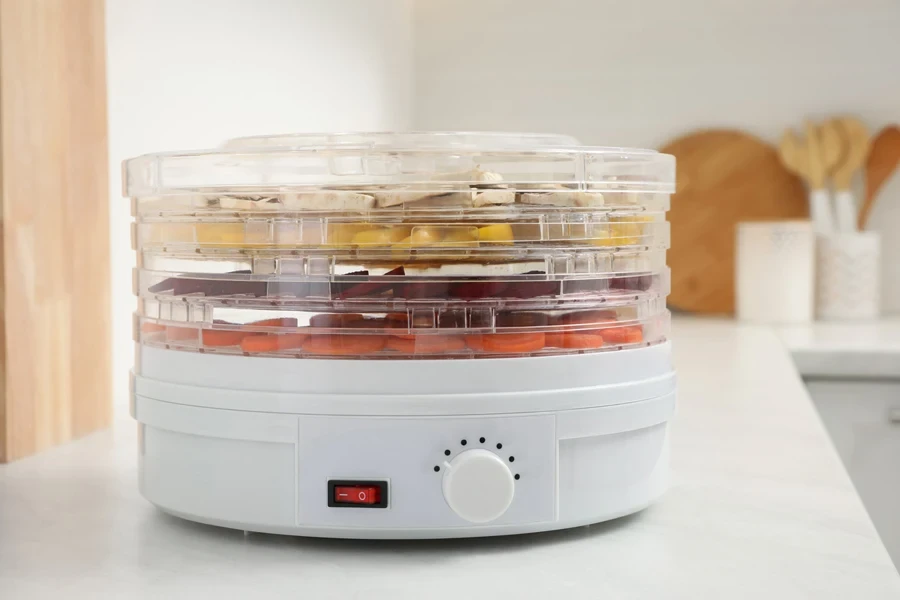
Retailers must consider several additional features after choosing between vertical or horizontal designs. One of these features is the temperature range. A quality dehydrator should include an adjustable thermostat to control the drying temperature, which is key for preserving the food’s flavor and nutritional content.
Remember that various items have recommended specific temperatures. Here are a few examples:
- Herbs: 90-100°F
- Fruits & vegetables: 130-160°F
- Meats, jerky & fish: 145-160°F
Temperature control is especially important for moist foods. Consumers can start with a higher temperature to speed up the process, then lower it to finish, ensuring a better result since evaporative cooling keeps food cooler than the dehydrator’s set air temperature.
Also, those interested in preserving enzymes in raw foods will benefit from temperature control, as it can prevent the enzyme activity from starting to degrade ( around 104-106°) and fully destroying (between 116-120°F). Although many prefer digital thermostats for accuracy, traditional analog ones work just as well, especially when consumers pair them with a kitchen thermometer for even more precise adjustments.
3. Tray shape
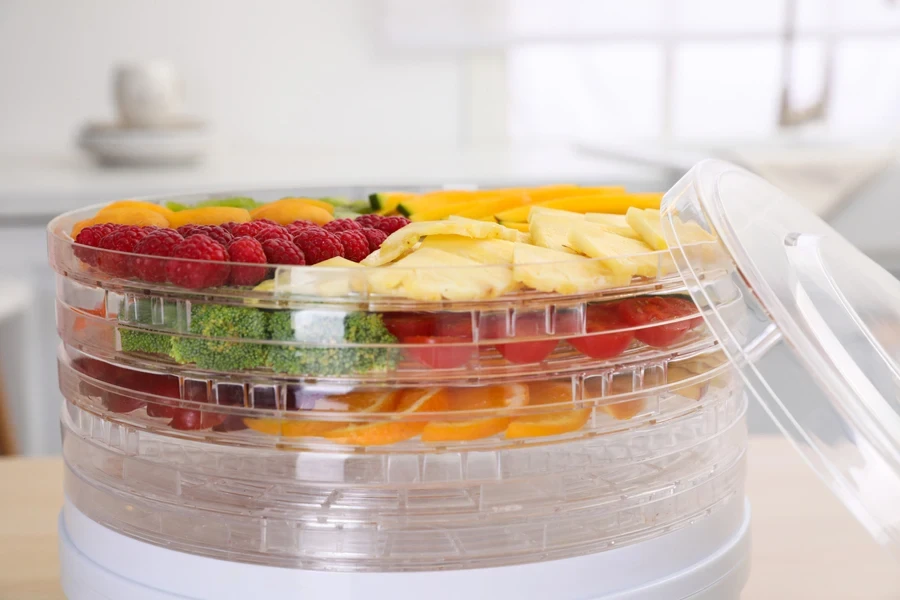
Dehydrators with sliding shelves usually have rectangular trays, which are excellent for neatly arranging longer items like jerky. However, stackable units tend to feature round trays, though some come in square shapes. Manufacturers usually add them to a central air duct to promote even drying. Some models offer varying tray heights to accommodate different food thicknesses and spacer rings for even more flexibility.
4. Construction materials
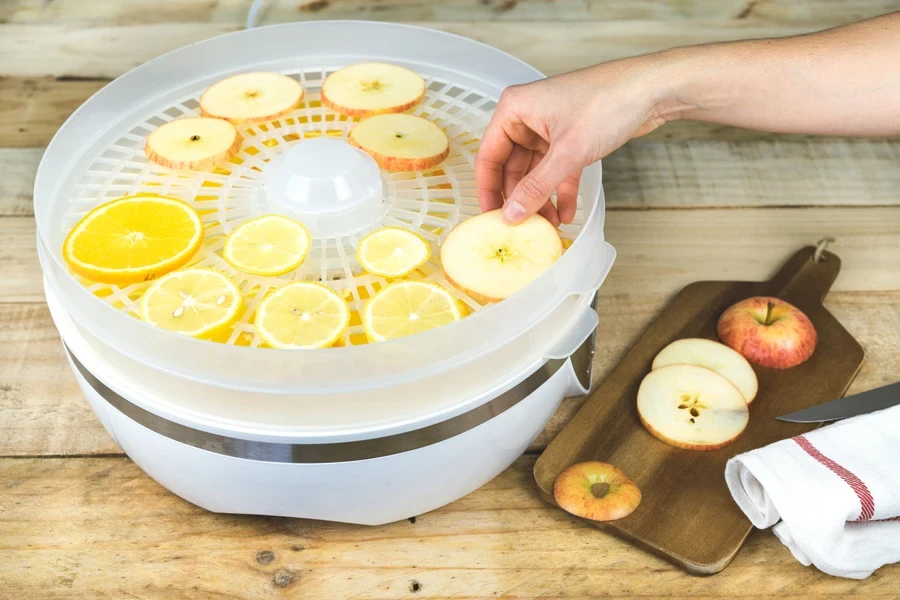
Manufacturers make most models from durable, FDA-approved plastics like polycarbonate, which is popular for its toughness (think motorcycle helmets and football gear). Stainless steel is another premium choice, particularly for tray construction. Accessory options include mesh screens and nonstick sheets, with specific trays available for creating fruit leathers.
5. Fan power and wattage
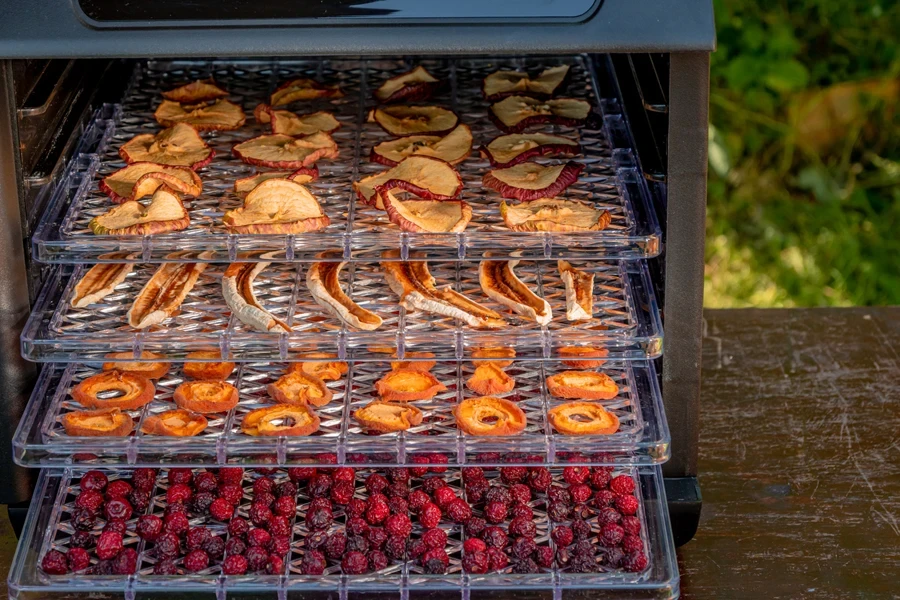
Dehydrators combine a fan with a heating element, drawing between 300 and 1000 watts of power. However, a well-balanced machine efficiently allocates power between heating and airflow to ensure optimal performance without raising the bills. Stronger models naturally generate some noise, comparable to a kitchen exhaust fan on medium-high. For this reason, horizontal models are generally noisier due to their powerful airflow systems.
6. Additional features for enhanced functionality
Some dehydrators come equipped with extra features that enhance convenience and versatility. Here are some of the best options to look for:
- Timers: Since dehydrating can take hours, having a timer is beneficial for peace of mind. This extra feature ensures that even if consumers leave the machine unattended overnight, it will shut off automatically and prevent overdrying.
- Filters: Certain models include air filters to keep drying foods free from particles if consumers work in environments prone to airborne contaminants, such as pet hair.
- Yogurt cups: Many dehydrators offer yogurt-making capabilities, either with included cups or by allowing users to fit their containers. Even if consumers are using vertical stackers with limited height, they should be able to customize a few trays by cutting away sections to provide space for yogurt cups. But be sure to remind them to be careful so they don’t disrupt the machine’s airflow.
Final words
Food dehydrators are a massive market. They have hundreds of thousands of searches and a positive growth projection for the next six years, making now a great time for retailers to enter the market. The trend is also rising as more people want eco-friendly ways to preserve their foods without chemical preservatives.
So, when stocking food dehydrators to cater to their rising residential segment, business buyers must consider all the factors discussed in this article. That way, they will stock highly attractive dehydrators and watch them fly off those shelves quickly.


